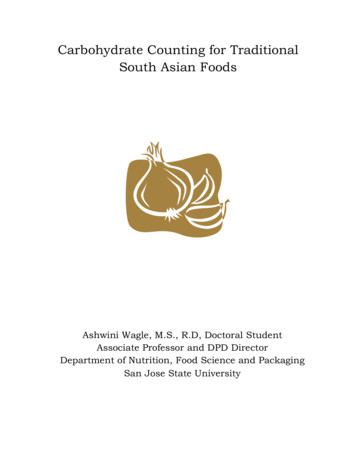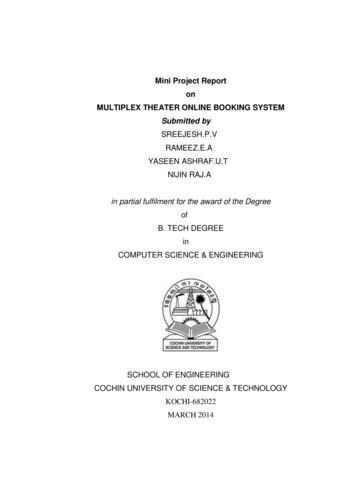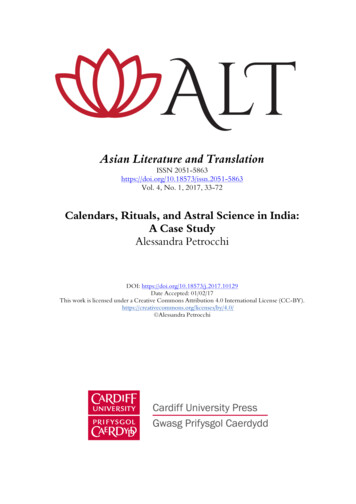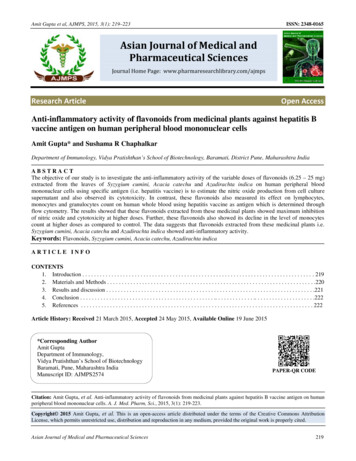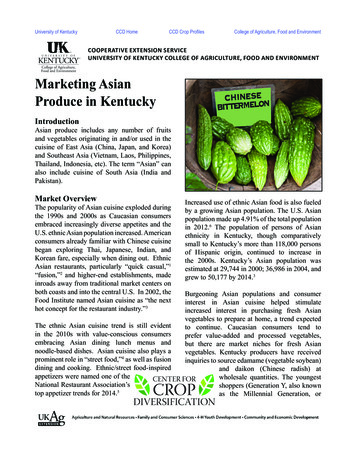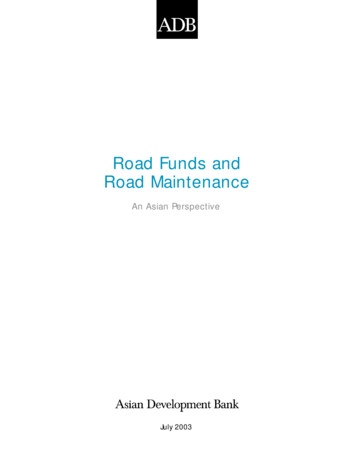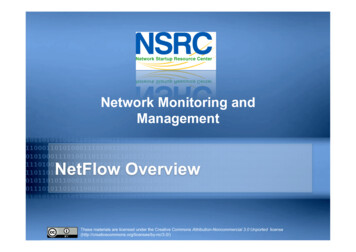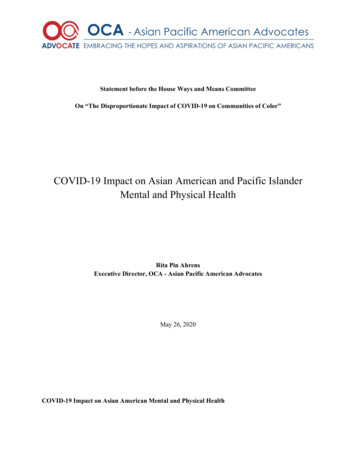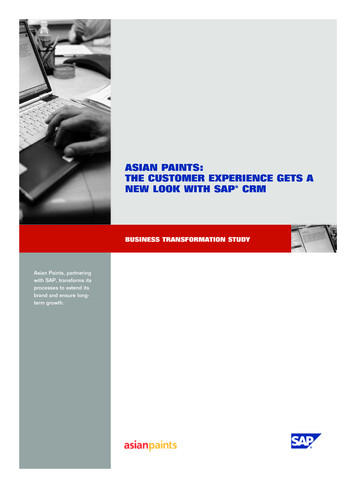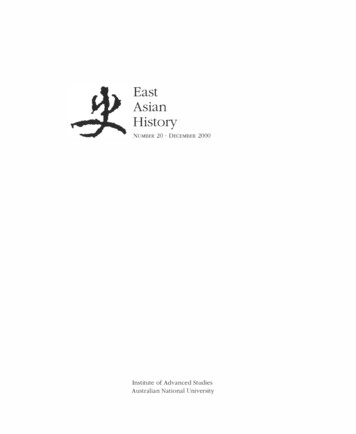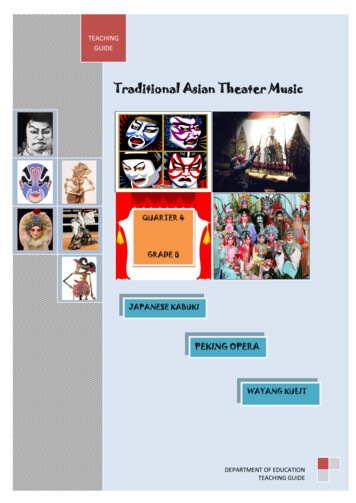
Transcription
gTEACHINGGUIDETraditional Asian Theater MusicQUARTER 4GRADE 8JAPANESE KABUKIPEKING OPERAWAYANG KULITDEPARTMENT OF EDUCATIONTEACHING GUIDE
GRADE 8 TEACHING GUIDEQuarter: 4 Module: 1Traditional Asian Theater MusicCONTENT STANDARDDemonstrates understanding of salientfeatures Asian traditional music bycorrelating musical elements and processesto our native formsPERFROMANCE STANDARDPerforms examples of Asian Traditionalmusic and theater, alone and with others, inappropriate tone, pitch, rhythm, expressionand styleObjectivesAt the end of this module, the learners are expected to:Identify the varied art forms used in Asian musical theater to communicatetales of everyday social and cultural relevance and interest.Analyze how elements of sound, gesture, movement and costume affect thecreation and communication of meaning in an Asian Musical and PopularTheater.Present on stage a performance inspired by Asian Musical and PopularTheaterEvaluate the performance of each group with regards to cultural relevance,Music performance and movementTime allotment: 5 minutesIntroductionDraw a picture of a theatre stage and ask the learners to write anything theyknow about theatre.Have you experienced watching a stage play or a theater play? How was it?Did you enjoy watching? In this module, you are about to discover the traditionalAsian Theater art. You will have a unique experience on how this traditional theatermusic is performed.Theatre Arts is one of the ancient traditions of the people in Asia particularly inJapan and China. This theater art form was transmitted from generation togeneration. It mirrors or reflects life. Its key principle of theater is selectivity. Throughthe various forms of theater art, a specific form can achieve clarity, order and beautyrarely found in ordinary life.You will also learn to demonstrate understanding about theater, skills on howto perform in stage, including the use of music as an important part of theperformance.
Pre-AssessmentTime allotment: 10 minutesIn a piece of bond paper, ask the learners to write their comments and letthem discuss it with the whole class.Picture Interpretation: Say something about the pictures below.Write your commentsinside the s/ppmWaNJnHa4/s1600/wayang kulit.jpg
Time allotment: 5 minutesLearning Goals and TargetsIn this phase, ask the learners to define their personal goals and targets and let themwrite it in their journal.At the end of this module, I will learn about.Part IWhat to knowTime allotment: 30 minutesTell the learners to read the selection below to enable them to acquire adequate andrelevant information.Japanese TheaterTraditional form of popular theater which began at the end of the 16th century andsoon became the most successful theater entertainment in the red light districts of the greatcities. Together with Nōh, it is considered the most important Japanese contribution toWorld Theater. Both Nōh and kabuki are unique and genuine expressions of the Japanesespirit and culture. They mirror, however, taste and ideals of different social classes, inprofoundly different environments and epochs.Vocal Pattern and Techniques:1) Ipponchōshi or the continuous pattern – used in speeches building up to an explosiveclimax in the aragoto(oversize, supernatural, rough hero) style, it requires anextraordinary breath-control that only few experts succeed in achieving2) Nori technique – adapted from the chanting of jōruri, implies a very sensitive capacity ofriding the rhythms of the shamisen (string instrument), declaiming each accompaniment
3) Yakuharai technique - the subtle delivery of poetical text written in the Japanesemetrical form of alternating seven and five syllabusVocal and Instrumental FeaturesDances and movements are accompanied by shamisen music which collected andpopularized a number of aspects from all previous forms of Japanese music, from gagaku(classic court music imported from China during the 18th century), kagura (performed inShinto shrines), nō (chant derives from shōmyō, the sophisticated and rich tradition ofBuddhist chanting), down to the folk and fashionable song of the day. The most popularshamisen music was called nagauta (long song) which reached a golden age in the first halfof the 19th century as dance music for the henge mono or quick change pieces.Naugata music is very flexible, can be performed by one shamisen or by the entire orchestraof twenty musicians , of which ten are shamisen players, while other play flutes (fue takenfrom the nō) and drums (small drum-kotsuzumi; waist drum-ōtsuzumi; stick drum-taiko)Shamisen- 3 stringed cons-by-dunedhel/shamisen-icon.htmlKotsuzumi– Small shoulder hers.phpOtsuzumi– Waist hers.phpTaiko – Stick Drumhttp://www.clker.com/clipart-taiko-drum.html
Chinese TheaterPeking opera is a form of traditional Chinese theatre which combines music, vocalperformance, mime, dance and acrobatics. It arose in the late 18th century and became fullydeveloped and recognized by the mid-19th century. The form was extremely popular in theQing Dynasty court and has come to be regarded as one of the cultural treasures of China.The vocal requirements for all of the major roles were greatly reduced for Peking opera. TheChou, in particular, rarely has a singing part in Peking opera, unlike the equivalent role inKunqu style. The melodies that accompany each play were also simplified, and are playedwith different traditional instruments than in earlier forms. The popularity of Peking opera hasbeen attributed to the simplicity of the form, with only a few voices and singing patterns. Thisallowed anyone to sing the arias themselves.Beijing opera follows other traditional Chinese arts in emphasizing meaning, rather thanaccuracy. The highest aim of performers is to put beauty into every motion. One skill maytake precedence at certain moments during a play, but this does not mean that other actionsshould cease. Much attention is paid to tradition in the art form, and gestures, settings,music, and character types are determined by long held convention.Vocal and Instrumental FeaturesPerformances are accompanied by music - usually played on three types ofinstrument: wind instruments, string instruments and percussion. The main instruments areChinese in origin: the jinghu, a two-stringed instrument played with a bow, the yueqin, a fourstringed instrument that is plucked, a sanxian, a three-stringed instrument also plucked, thesuona horn, Chinese flutes and a variety of gongs and cymbals. The melodies are rhythmicand graceful.The melodies played by the accompaniment mainly fall into three broad categories.The first is the aria. The arias of Beijing opera can be further divided into those of theErhuang and Xipi varieties. An example of an aria is wawadiao, an aria in the Xipi style thatis sung by a young Sheng to indicate heightened emotion. The second type of melodyheard in Beijing opera is the fixed-tune melody, or qupai. These are instrumental tunes thatserve a wider range of purposes than arias. Examples include the "Water Dragon Tune"(shui long yin), which generally denotes the arrival of an important person, and "TripleThrust"(ji san qiang), which may signal a feast or banquet. The final type of musicalaccompaniment is the percussion pattern. Such patterns provide context to the music inways similar to the fixed-tune melodies. For example, there are as many as 48 differentpercussion patterns that accompany stage entrances. Each one identifies the enteringcharacter by his or her individual rank and personality.Traditionally, the musicians also remain in full view throughout the performance andare dressed in the same style as the stage assistants. They come and go freely and arenever considered part of the stage picture. In contemporary China, the musicians are oftenseated in an orchestra pit and kept offstage.Theater musicians learn their parts by rote since Chinese musical notation is veryimprecise. Most music used in the Peking Opera has been worked out collaborativelybetween actors and musicians; most is borrowed from already existing sources and
recombined according to the requirements of a particular play. Although they may beclassified as string, wind and percussion, the instruments of the Chinese orchestra have nocounterparts in the West. The leader of the orchestra plays a drum which establishes thetime and accentuates the rhythm. Gongs, cymbals, brass cups, flutes, stringed instrumentsand more exotic items complete the orchestra. Songs are accompanied only by flute andstrings, but entrances and exits are signalled by deafening percussion passages. Much ofthe onstage action is performed to a musical backgroundThe actor’s delivery of lines is rigidly controlled by conventions. Each role has itsprescribed vocal timbre and pitch, and syllables are often drawn out regard forconversational usage in order to maintain the appropriate rhythm. Even spoken passagesare governed by strict rhythms and tempos. Chanted and sung passages are freely insertedinto spoken monologues or dialogues. Thus lines are rendered in an extremely stylizedmanner.Indonesian TheaterWayangkulit, shadow puppets prevalent in Java and Bali in Indonesia, and Kelantan andTerengganu in Malaysia are without a doubt the best known of the Indonesian wayang. Kulitmeans skin and refers to the leather construction of the puppets that are carefully chiseledwith very fine tools and supported with carefully shaped buffalo horn handles and controlrods.Wayang is an Indonesian and Malay word for theatre. When the term is used to refer tokinds of puppet theater, sometimes the puppet itself is referred to as wayang. "Bayang", theJavanese word for shadow or imagination, also connotes "spirit." Performances of shadowpuppet theater are accompanied by gamelan in Java, and by "gender wayang" in Bali.Dalang as a source of recreation, of humor and of popular philosophy (essentialcommunication between the artist and the audience). Shadow play is an invention of manwhich reflects his experience of nature and of his thought. Puppets are projected by thelamp on a white screen.Non-jointed puppets were manipulated by the chief performer, the dalang, who told a story tothe accompaniment of several instruments, including some that are part of the present daygamelan ensemble.Wayangkulit was performed in royal court and widely performed in public on religiousoccasions so that knowledge of wayang became widespread among all classes in Java.Vocal and Instrumental FeaturesGamelan ensemble is composed mainly by bronze percussion instruments, augmented byother percussion instruments, strings and flute. A full Javanese gamelan ensemble consistsof:a. saron - xylophone of heavy bronze barsb. gender - bronze xylophone with resonance chambers beneathc. bonang - set of bronze bowlsd. gong and kempul – hanging gongse. kenong and ketuk – single inverted bronze bowlf. gambang – wooden xylophoneg. rebab – two-stringed fiddle
h. suling – flutei. kendang – horizontal drum beat with the fingers on both endsj. tjelempung – a zither of thirteen double stringshttp://homepages.cae.wisc.edu/ jjordan/gamelan/instrum-photo.htmlThe preponderance of bronze instruments gives gamelan music a bright, lingering sound,ranging from the slow, majestic melodies of the Javanese gamelan to the clangorousvibrancy of Balinese gamelan. Fiddle and flute add delicate counterpoint to a four-squarepattern of percussive melodyIn addition to setting the mood or atmosphere of a play, music has two major dramaticfunctions in the theatre. It accompanies the singing/chanting and it accompanies stageactions including dance. The importance of each function varies from area to area and fromtheater form to theater form.The Dalang sings the mood songs (suluk) at regular intervals during performance; in a ninehour wayangkulit, he may sing fifty or sixty. Nevertheless they are considered relativelyunimportant except as mood pieces. The same generalized lyrics may be used in play afterplay. Suluk are never accompanied by the full gamelan ensemble. Often a singleinstrument accompanies the singer, never more than three or four. The major dramaticfunction of gamelan music is to accompany stage action. Entrances, exits and fight scenesare executed in time to gamelan music.
Lesson 1Table top discussionTime allotment: 30 minutesGroup the class into 3, let them watch a video clip of kabuki performancesand ask each group to discuss it. After the discussion with the small group,let the leaders from different small groups share the information with thewhole class. (Videos can be previewed at home as an assignment prior tothe discussion or play all three videos one at a time to the class)Group 1Group 2Group 3VIDEO CLIP 1Kabuki TheatreVIDEO CLIP 2Japanese Theatre 3:KabukiVIDEO CLIP 3 tch?v F3IHdm2Tf8g&feature relatedhttp://www.youtube.comm/watch?v Wh3gPZzEgDQ&feature relatedhttp://www.youtube.com/watch?v 67bgSFJiKc&feature related
LESSON 2Carousel BrainstormingTime allotment: 30 minutesGroup the class into four. Given the Cue words posted on four corners of theclassroom, ask each group to go around and let them discuss with the othergroup what they know about Chinese Peking Opera. After the groupings, askeach group to write the things that they find out about the lesson.Vocal andInstrumental undDistinct TheaterElements andFeatures
LESSON 3Hit the Gongs!Time allotment: 30 minutesAsk the class to group into three and watch a video clip of a Wayang Kulitperformance. On a paper plate, Draw a “gong” a
are dressed in the same style as the stage assistants. They come and go freely and are never considered part of the stage picture. In contemporary China, the musicians are often seated in an orchestra pit and kept offstage. Theater musicians learn their parts by rote since Chinese musical notation is very imprecise. Most music used in the .
